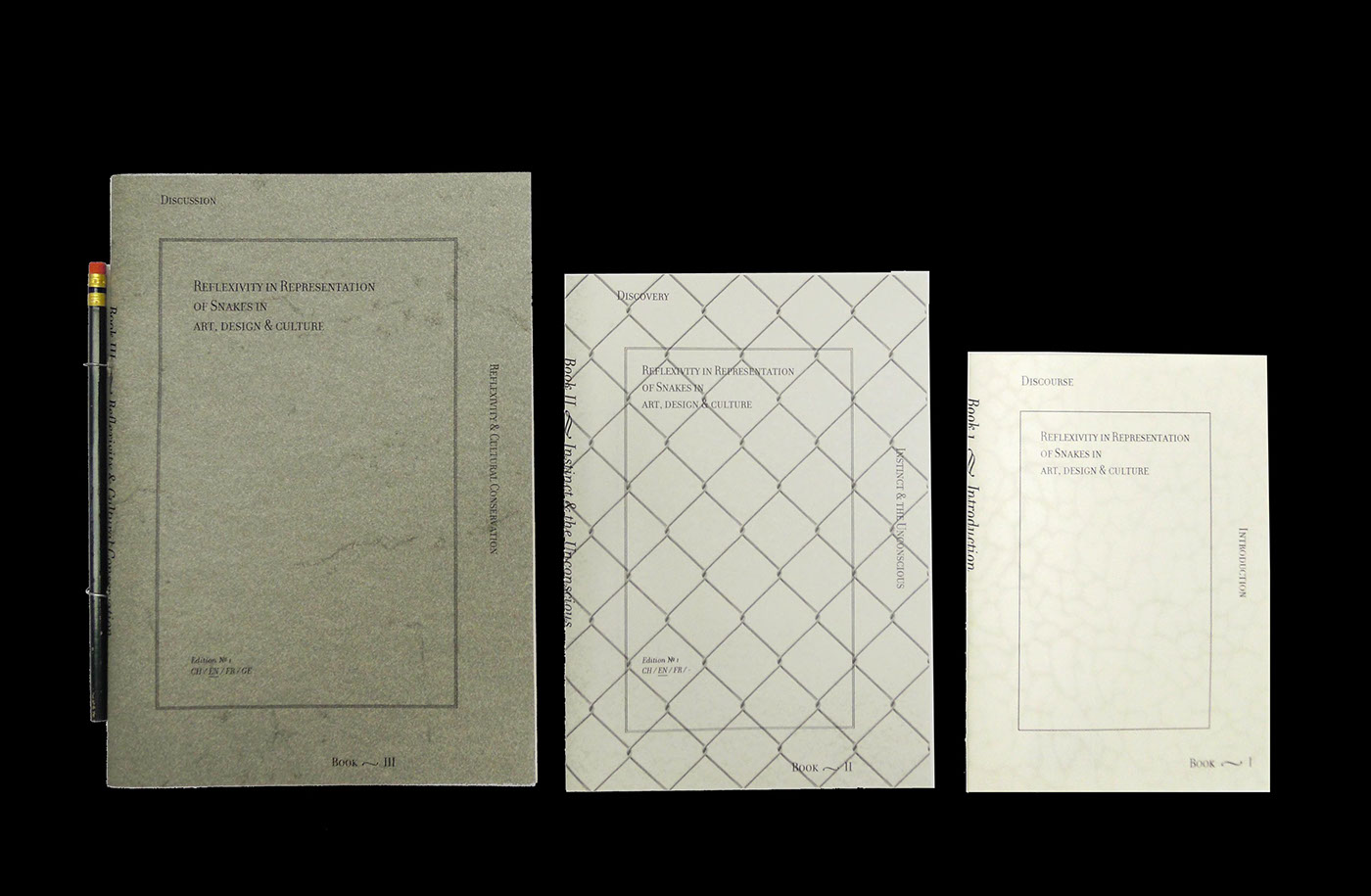
Snakes in Art, Design & Culture:
Reflexivity in Representation
Student Project, 2013
NTU School of Art, Design & Media

The Flexa Mandala in it's different stages of 'opening'.
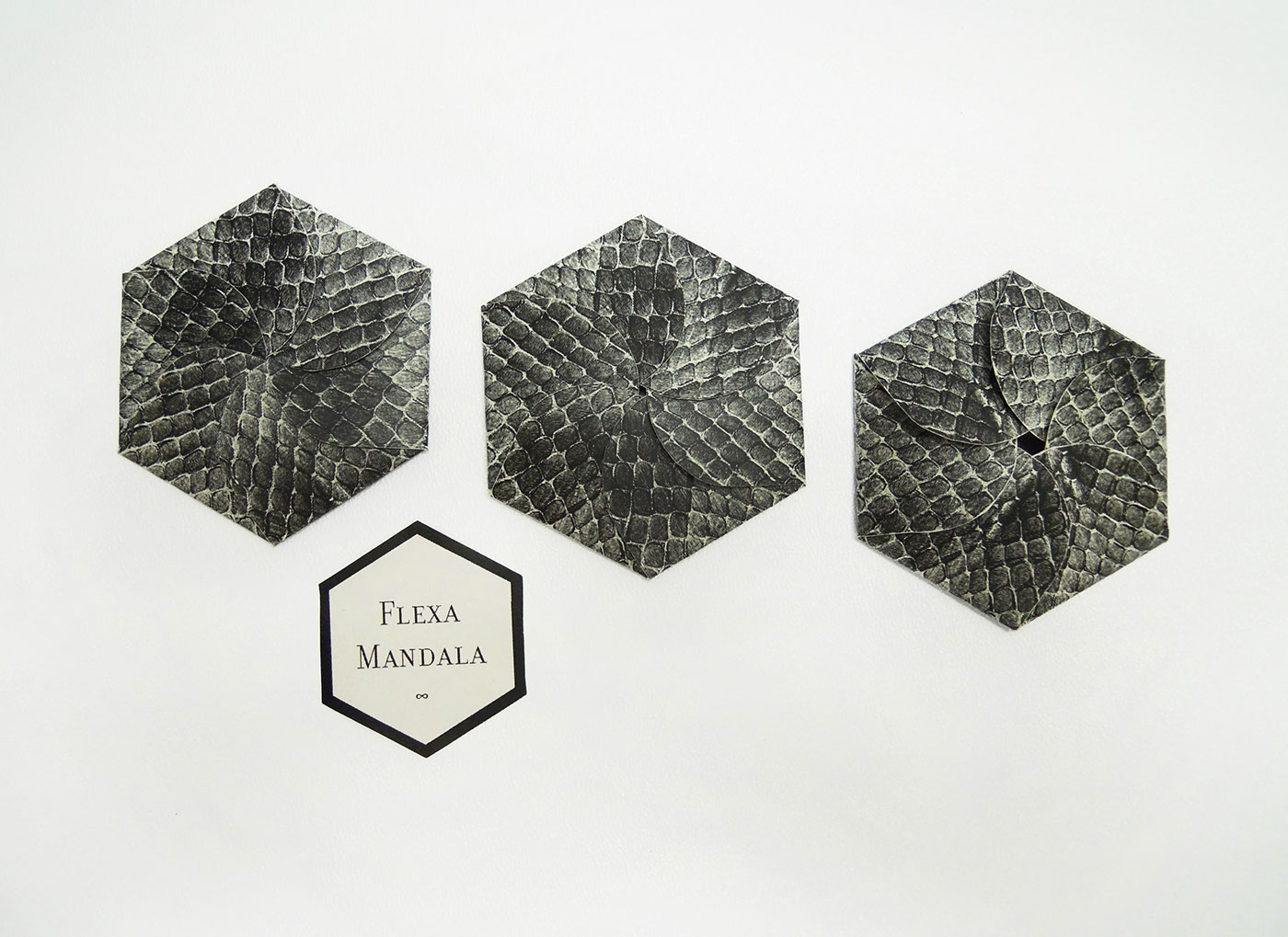
The Texture of the Flexa Mandala reflects the Snake Skin in it's truest form. It holds the manifestations of different serpentine intepretations of mandalas.
Every Mandala has a different number to describe the uniqueness of what each contains.
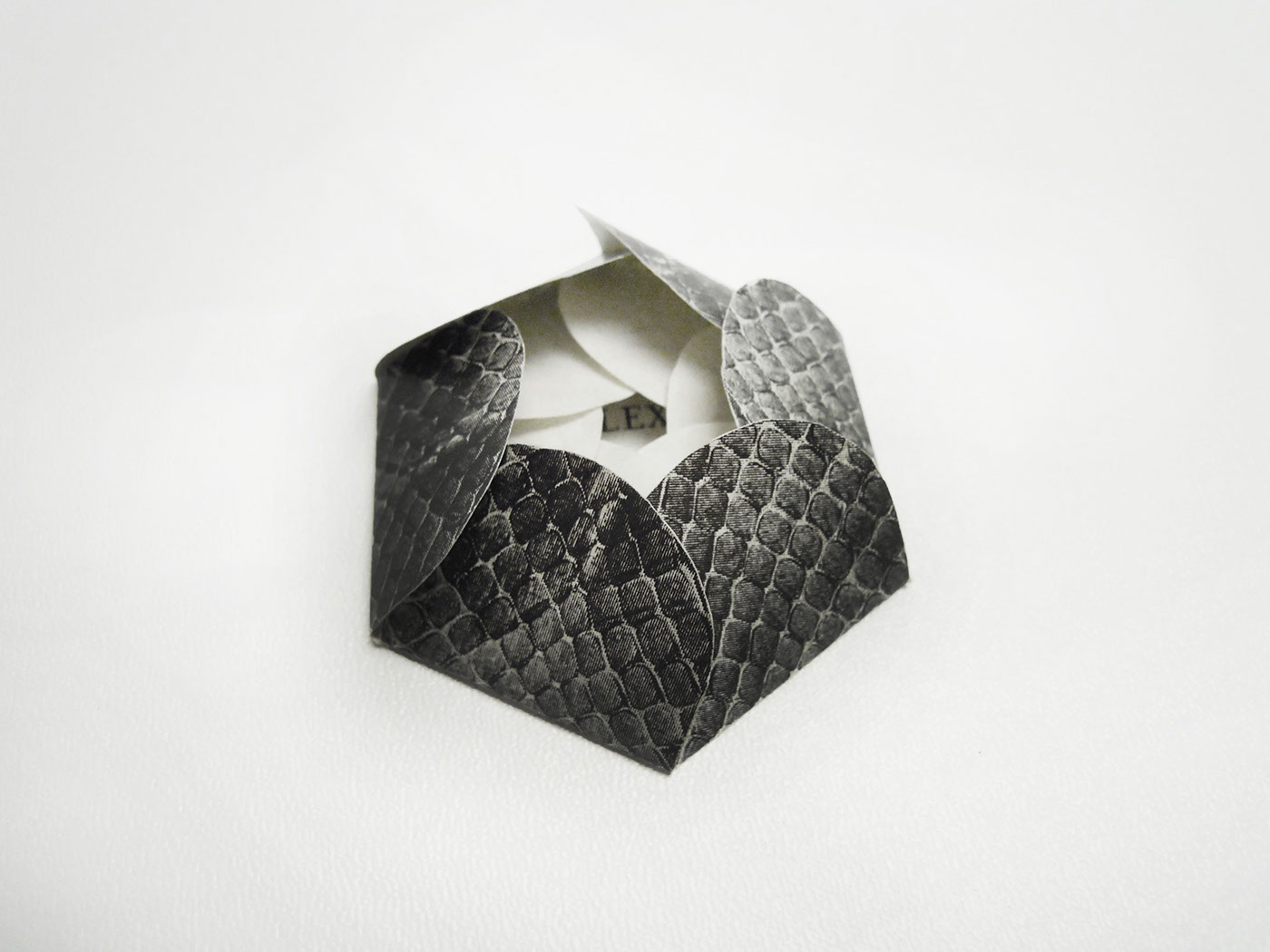
Unfurling the Flexa Mandala is approached from the centre, it blooms like a lotus flower.
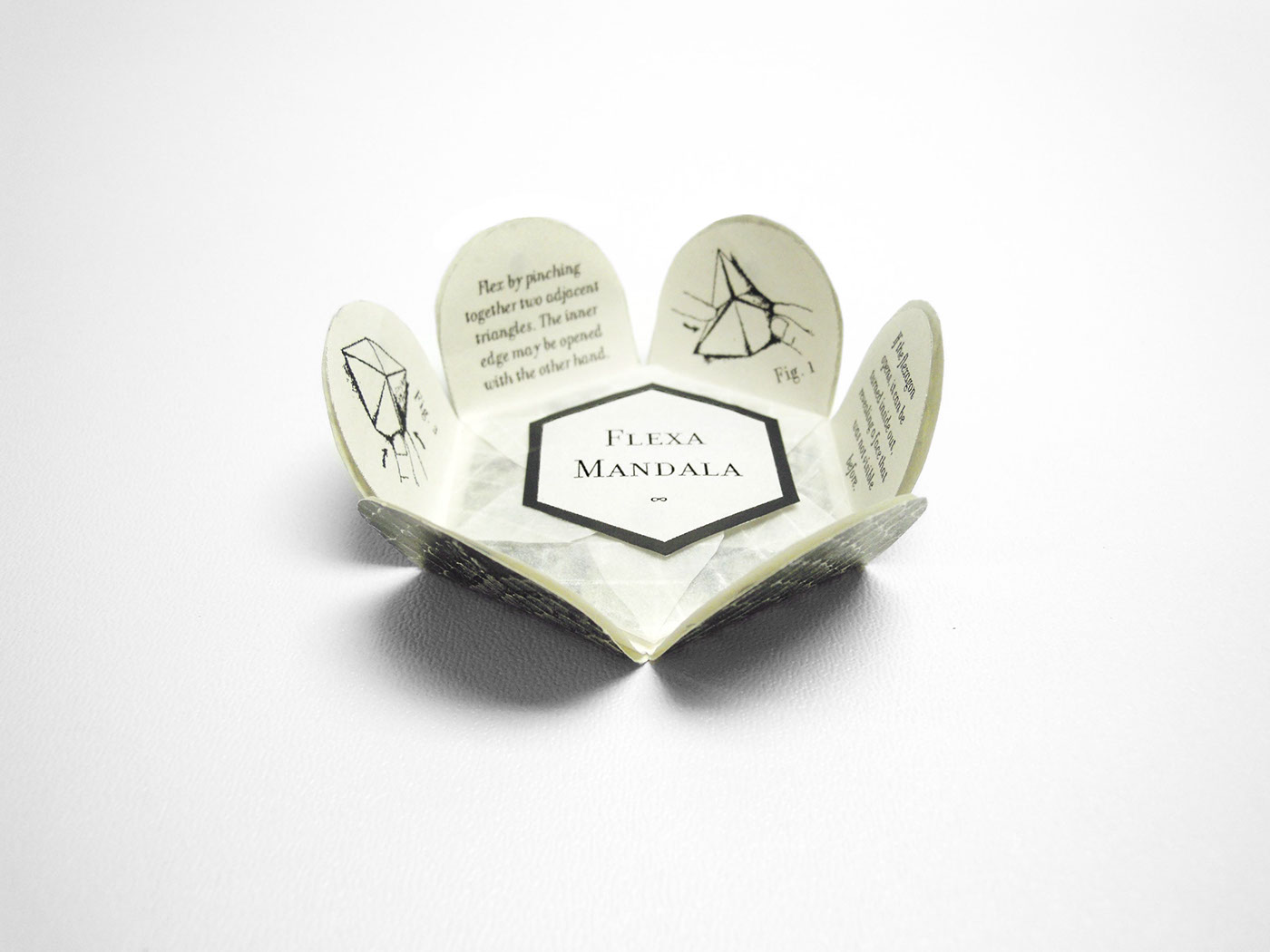
The instructions would clearly describe the workings and process of this special mandala piece.
The wrapper is made from hand folded glassine paper that produces the idea of a snake shedding it's skin it is wrapped with, to unveil a renewed form which in this case, is the Flexa Mandala.
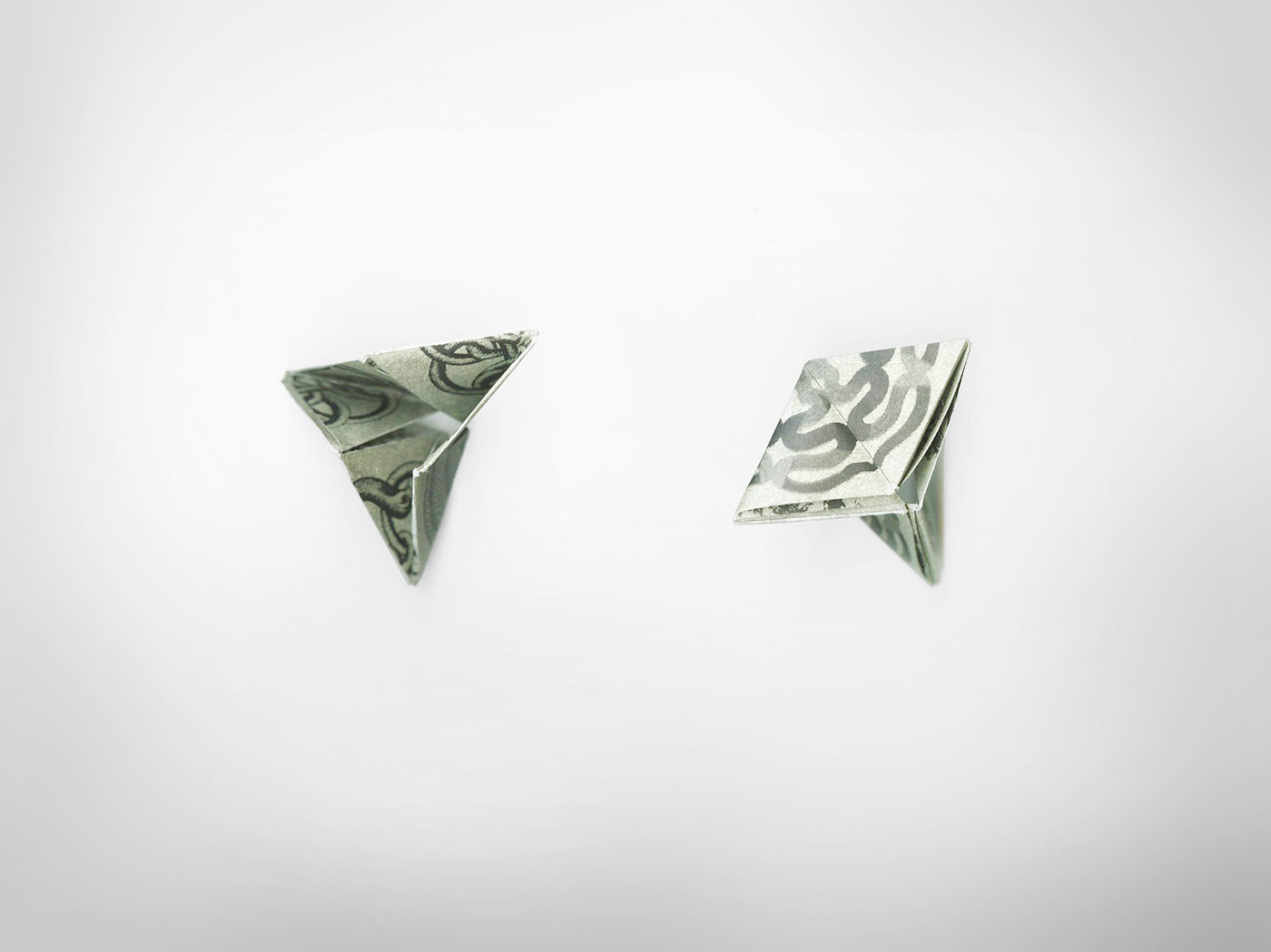

~
Pt • 2
Snake Zeitgeist
Online Database Catalog
Pt • 2
Snake Zeitgeist
Online Database Catalog
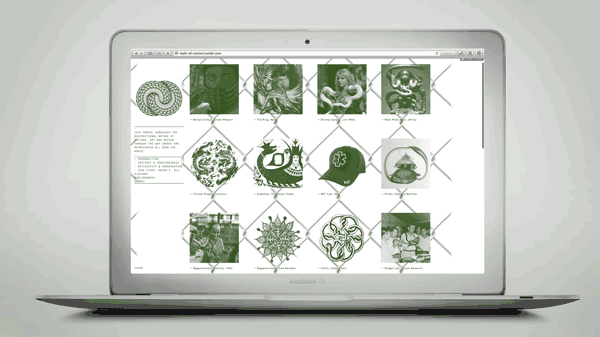
Online Visitors of the Site will stumble upon an exhaustive catalog of Snakes applied in cultures all over the world, curated by the agency but sourced from the online crowd source.
The website will mirror the publication however with an interactive crowd sourcing feature where we collect snake images submitted by visitors to continue and develop the snake zeitgeist beyond the course.
A continuous approach to all projects of today is new media, this is a website where people can submit snake images to assemble a pictorial zeitgeist of snakes across all cultures, art and design.
~
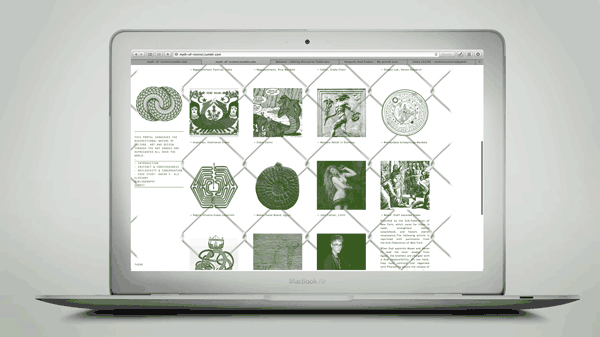
The fence texture is taken from the Nagapanchami Festival in India where snakes are presented interlocking like a contemporary wire fence.
Pt • 3
The Discourse
A Three Tier Publication
The Discourse
A Three Tier Publication
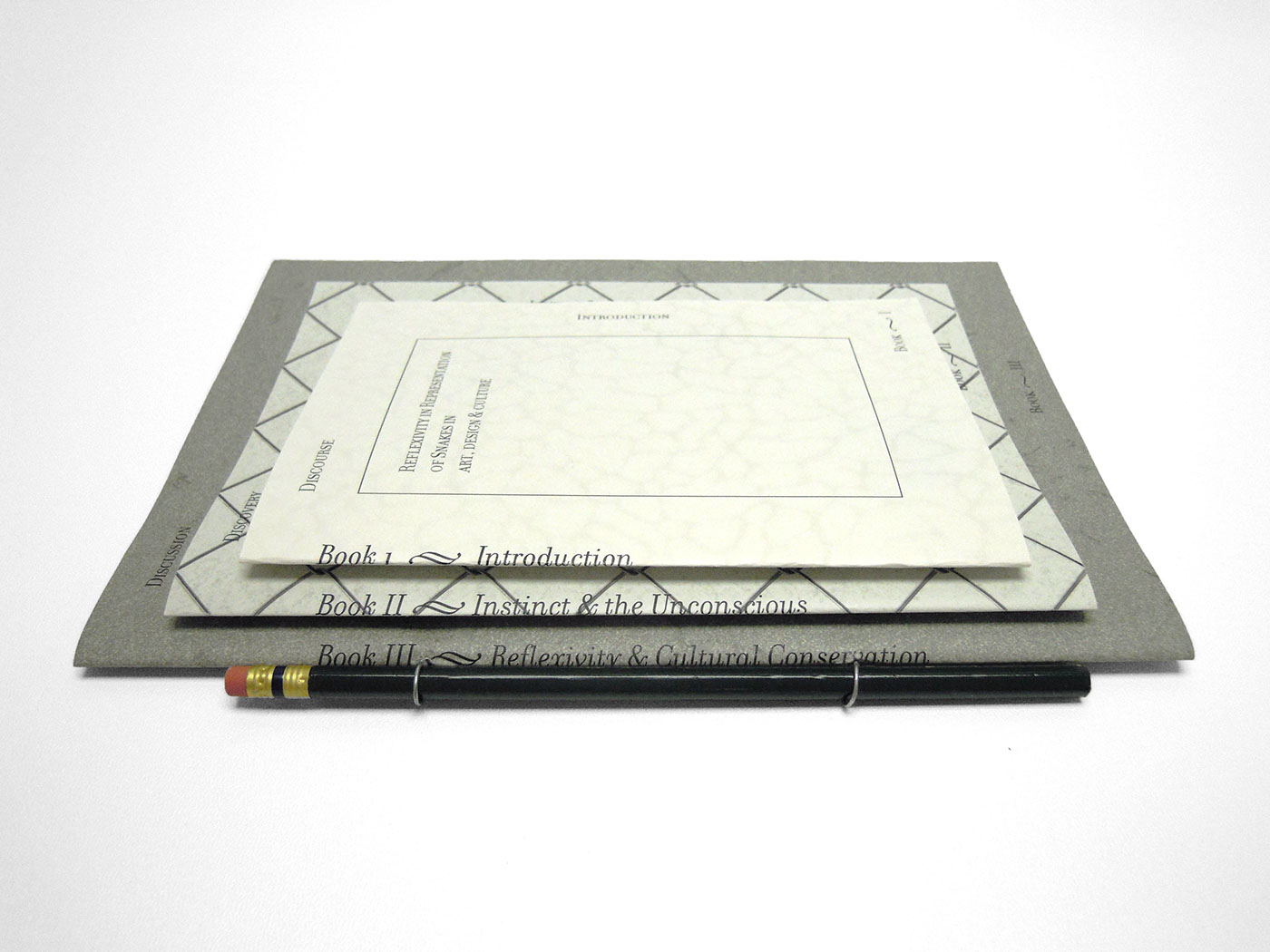
The three tiers of the booklet resemble the three coils below the Cambodian Buddha on the naga.
A discourse publication is the backbone of the project where we intellectually reassess our approach and appreciation of snakes in cultures. This will determine whether there is a difference in our perception of these from one culture to another, proving a certain instinctive collective unconscious.
~
The publication can be seperated into it's three sections: (1) Discovery, (2) Discourse & (3) Discussion.
In this publication, we:
[1] Consider difference, diversity and per perception.
[2] Challenge the fallacy of mentioned practices which is not grounded in theory.
[3] Changing the angles to view the situation in different perspectives from experts.
[4] Step back and put distance between us and the situation through case studies.
~
Examples: Comparing between the different cultures across the world to discern whether there is a collective instinct.

The texts overlaps slightly to mirror the tiered format character of the publication.
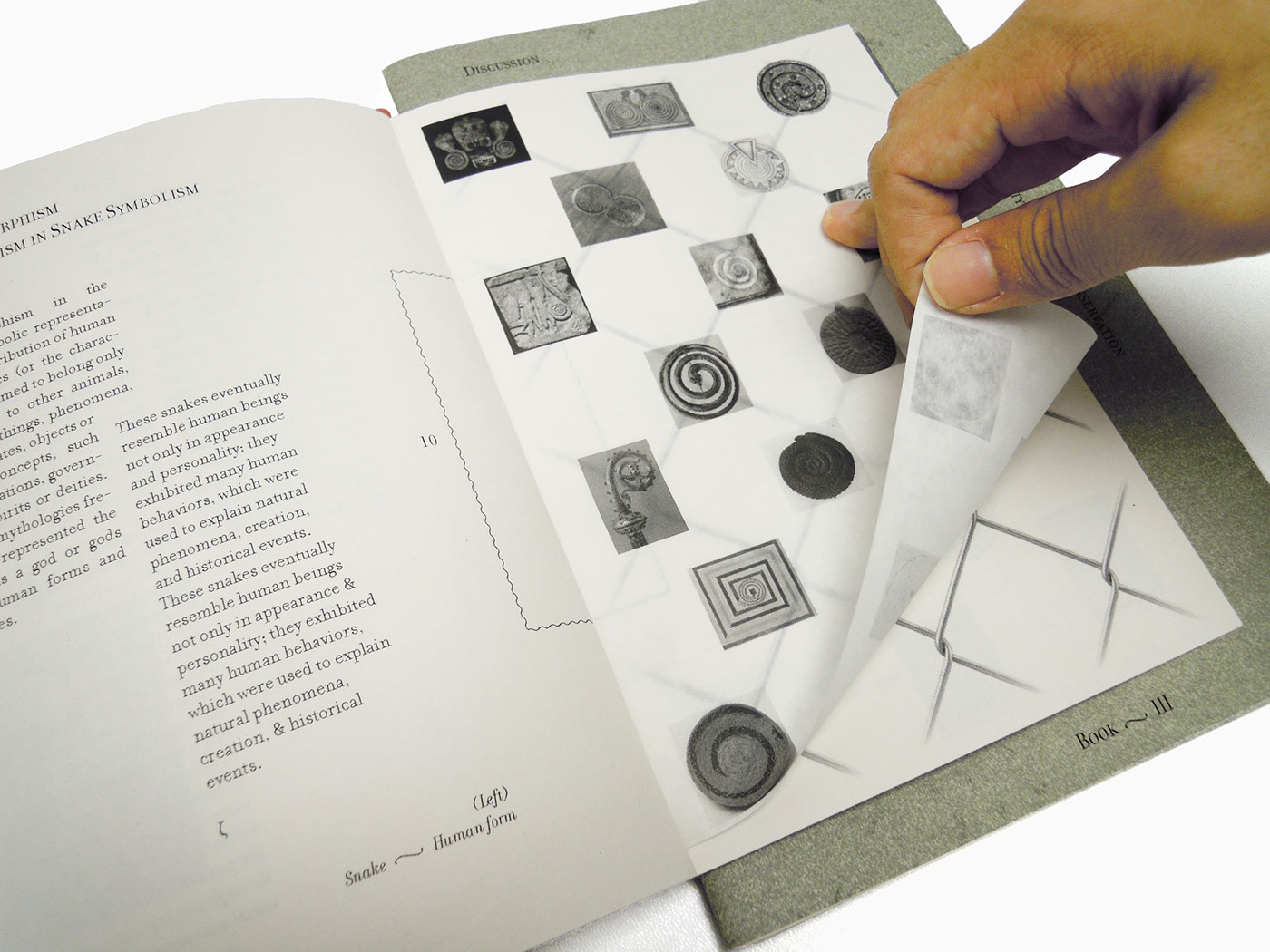
A thin glassine paper overlay a weave that resemble the nagapanchami snake interlocking patterns. This application also reflects the interconnectedness of the information presented in the publication.
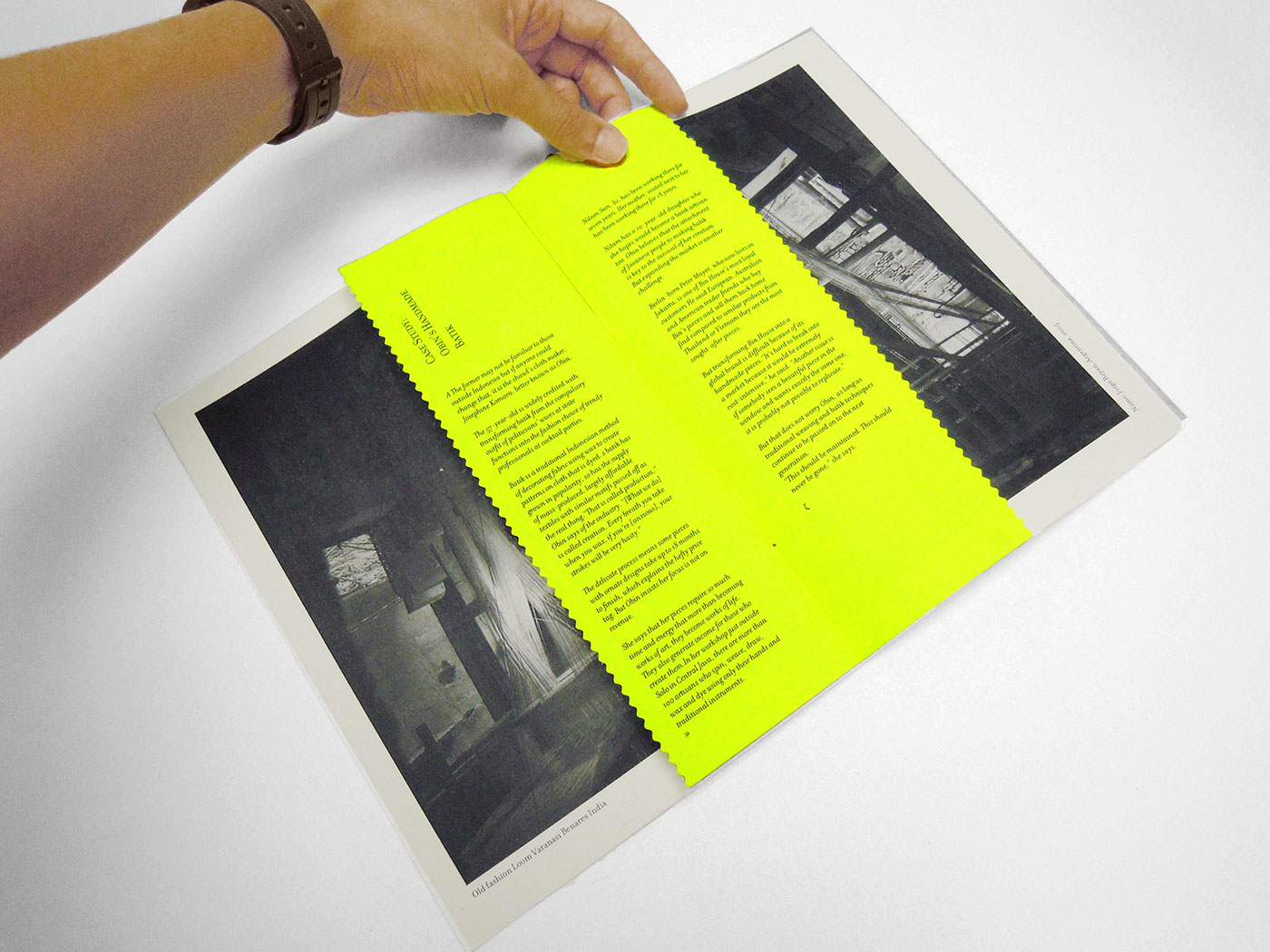
The sudden burst of color is inspired by the golden dragon roofs from Thailand.
Here you see the snake tongue as a way finder feature and the wiggled edge that mimic the snake slither.
Another instance of glyphs and wayfinders that reflect the slither of a snake.
The format gets the viewer very involved. The publication makes you turn the book horizontally or vertically to access certain information.
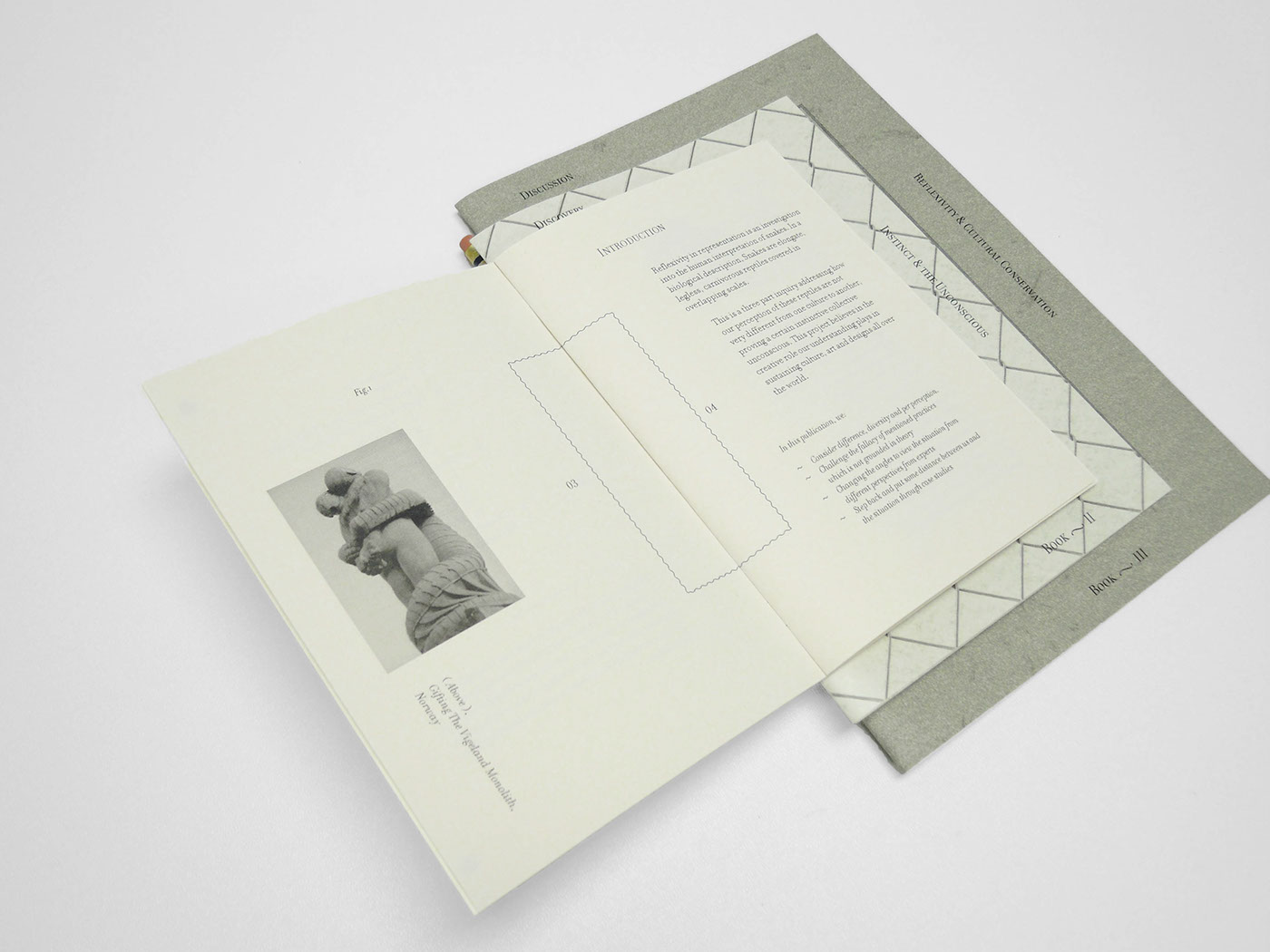
The page number is applied inside to give the reader a unique experience.
The pencil snakes its way into the loops to hold the publication together.


